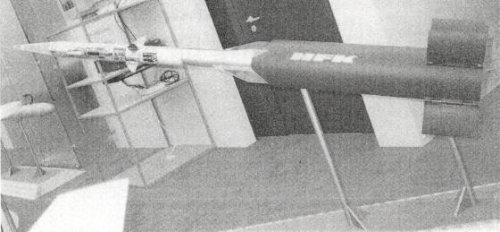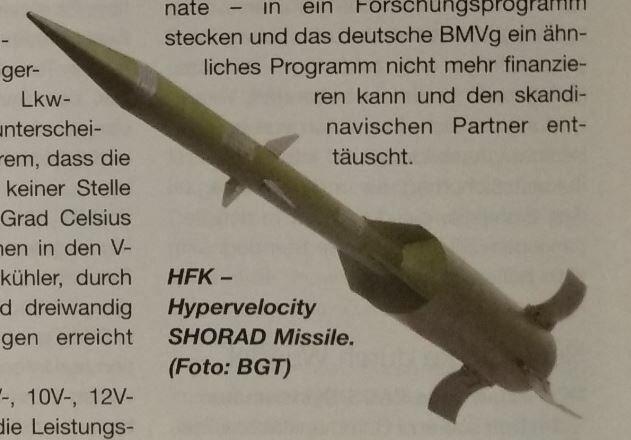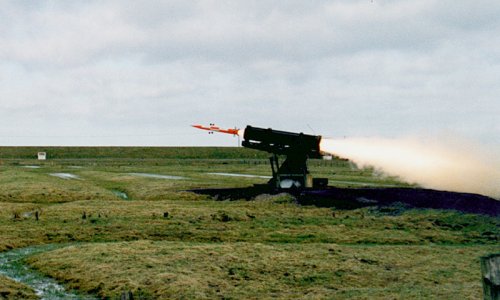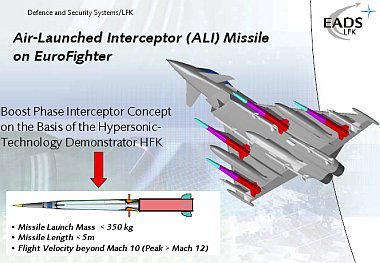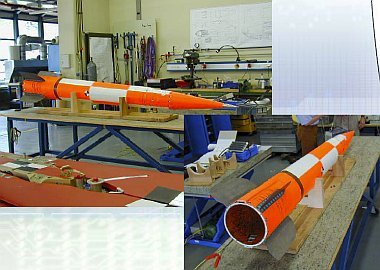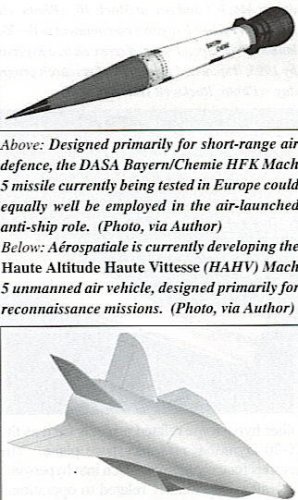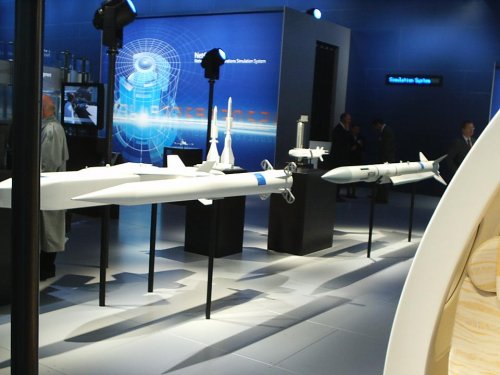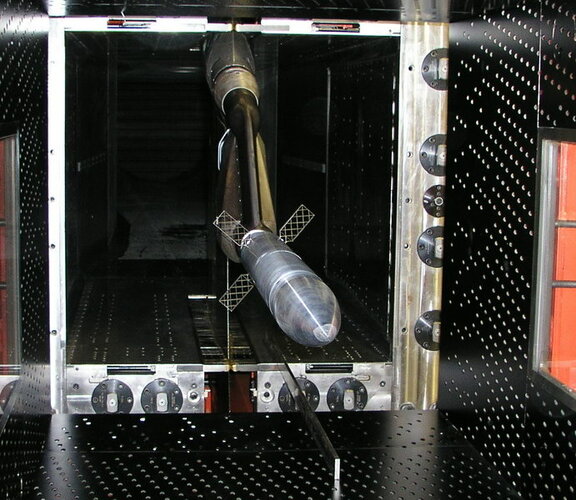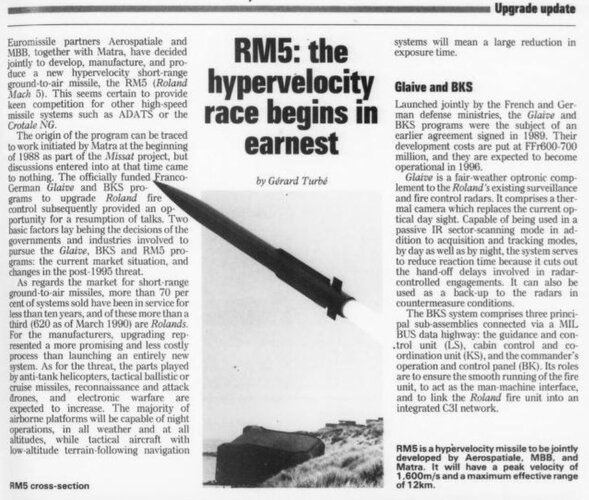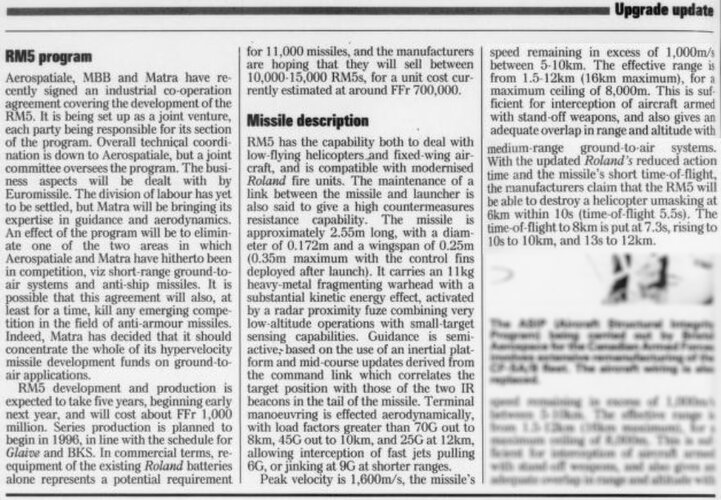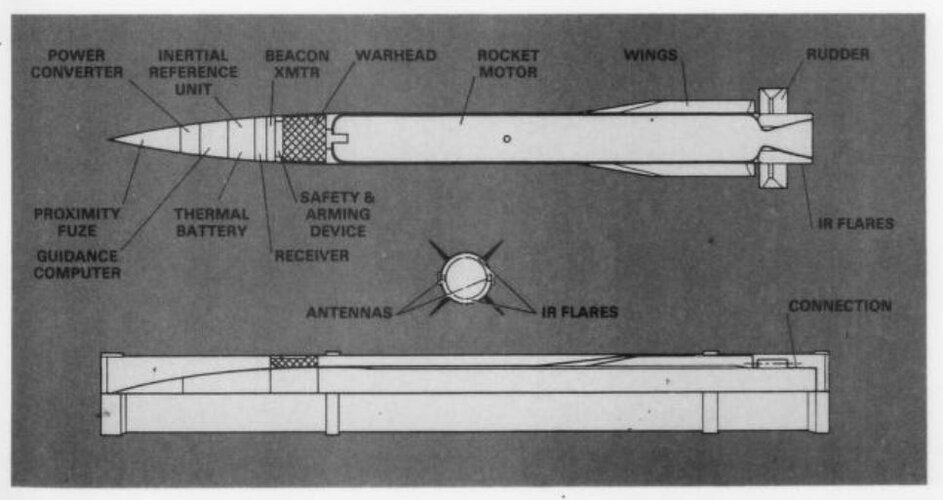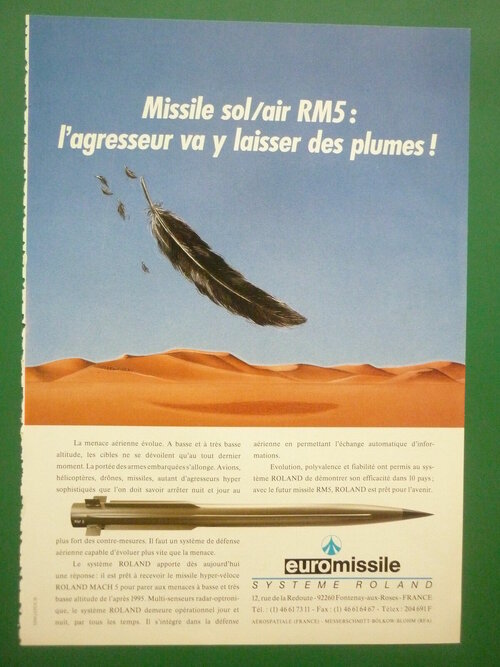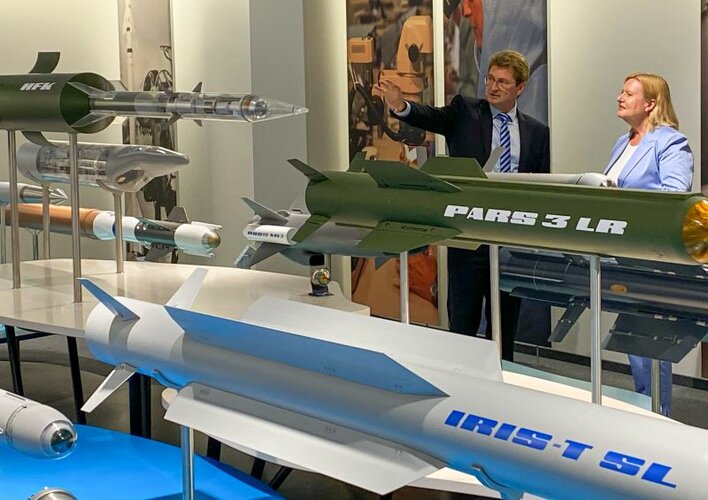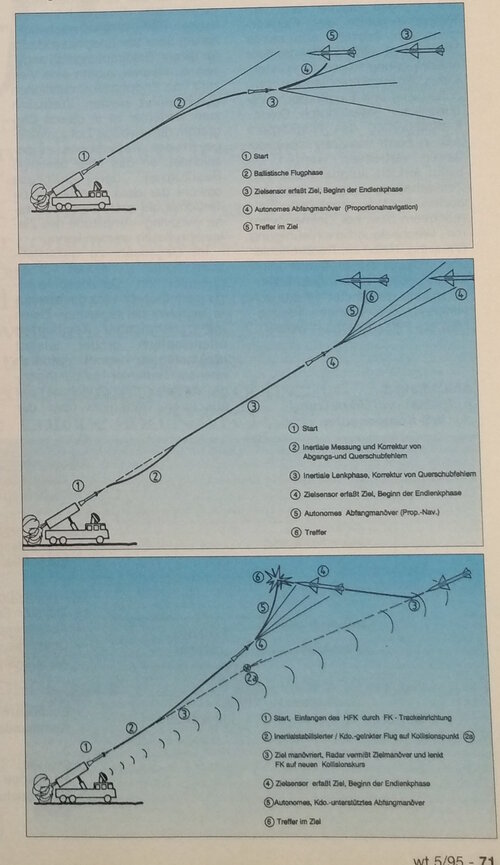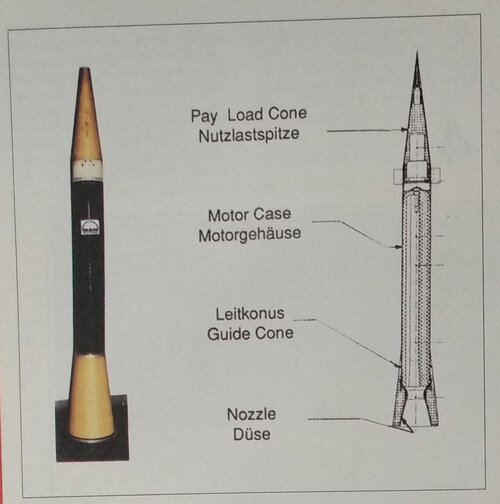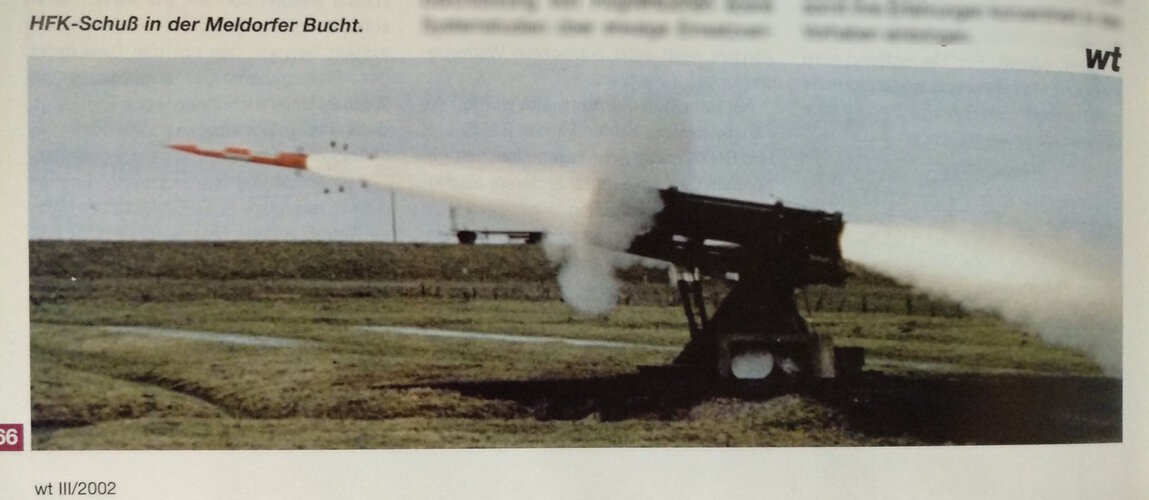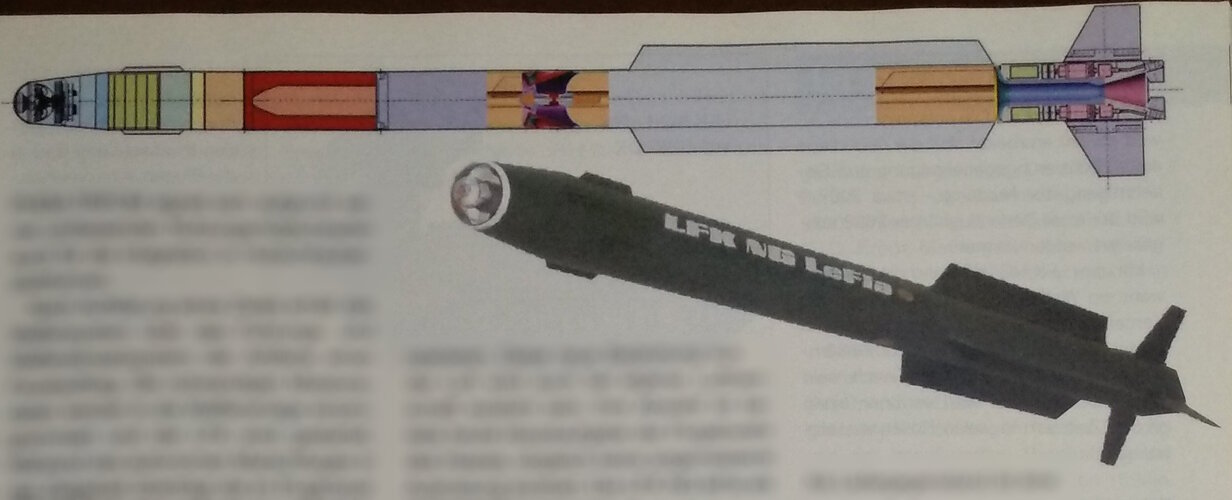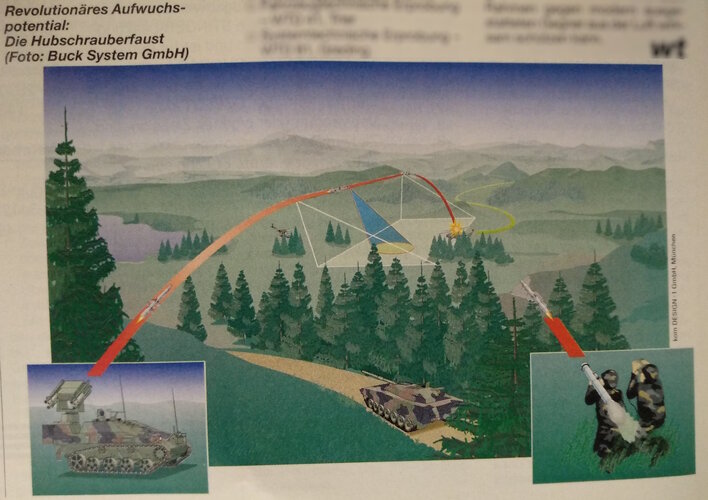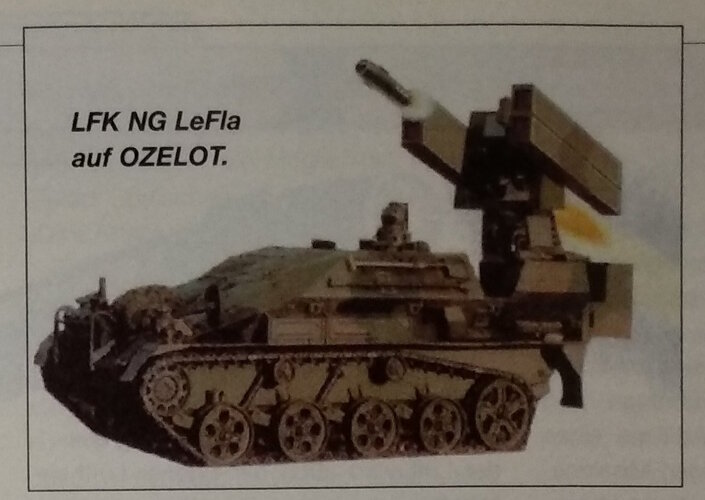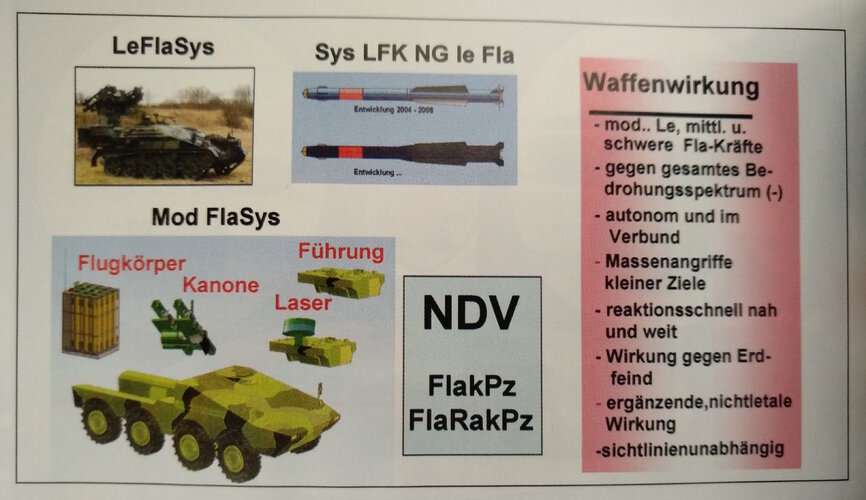HFK
A Hochgeschwindigkeitsflugkorper (HFK) hypervelocity surface-to-air missile research programme was started in Germany in 1990, and at least two different designs have been tested. A BGT design, known as HFK/KYV, was tested with eight firings up to December 2001. The missile had a length of 2.8 m, and a launch weight of 60 kg. This missile was in two stages, with the 44 kg first stage a solid propellant boost motor fitted with four folding fins that accelerated the missile up to M5 in around 1 second. The boost motor assembly was then jettisoned and the unpowered second stage flew to the target. The 16 kg second stage was called a Kill Vehicle (KV), this had a length of 0.9m, and had an inertial measurement unit, a 5 kg warhead, four small control fins and an imaging IR seeker. The seeker had 32 detector elements that were scanned to provide an image, enabling the second stage to home onto the target. The imaging IR seeker was protected from the heat generated by the high speed of the missile, by an ablative nosecone, that was jettisoned 2 to 3 seconds before intercept. The HFK/KV missile design was planned to be interchangeable with existing Roland canisters and launch systems, and was expected to have a maximum range of 12 km.
A second version was designed by DASA (LFK, now part of EADS), known as HFK/L. This version was a single-stage missile, but with a solid propellant boost motor that burned for 0.8 seconds and accelerated the missileto M5.3 (1.8 km/s). The HFK/L missile was first flown in 1995, and guided flight trials continued up to February 2002. The missile had a launch weight of 100 kg and included 36 solid propellant side thrusters forward of the centre of gravity and four lattice box type control fins at the rear. The lattice control fins were similar to those used on the Russian AA-12 ‘Adder’ air-to-air missile and SS-2 1 ‘Scarab‘ short-range ballistic missile. It was reported that this missile would have active or semi-active radar guidance, although a dual-mode active radar/ imaging IR seeker was also proposed. The initial HFK/L missile had a range of 12 km. In October 2000 a second phase of research was contracted with LFK, to develop two further missiles with a larger boost motor. The new motor will burn for 1.8 seconds, and will accelerate the missile to M7.0 (2.3km/s). The first test of the new missile was made in February 2002. A joint proposal was made by BGT and LFK in June 2001 to co-ordinate the two earlier projects into one design, to be used as a replacement for the Roland SAM and for possible use as an AAM from helicopters. The new design is for a two- stage missile, with first- and second-stage solid propellant motors. The first-stage motor has TVC, The motor efflux from the second-stage motor will be exhausted from two side nozzles in the missile body, forward of the wings. This will enable the two motors to be fired together or sequentially, depending on the target range. The missile has four long chord wings at mid-body and four control fins at the rear, similar to the IRIS-T air-to-air missile and SM-2MR Standard surface-to- air missile. The flight speed will be 2.0 to 2.5 km/second, with a range in excess of 10 km. The second stage has an IIR seeker, with inertial guidance in mid-course and a command uplink to enable the missile to intercept targets behind hills or terrain cover. A small fragmentation warhead will probably be fitted, although the objective is to achieve 'hit-to-kill'. Full-scale development is expected to start in 2004, with a planned in-service date of 2009.

